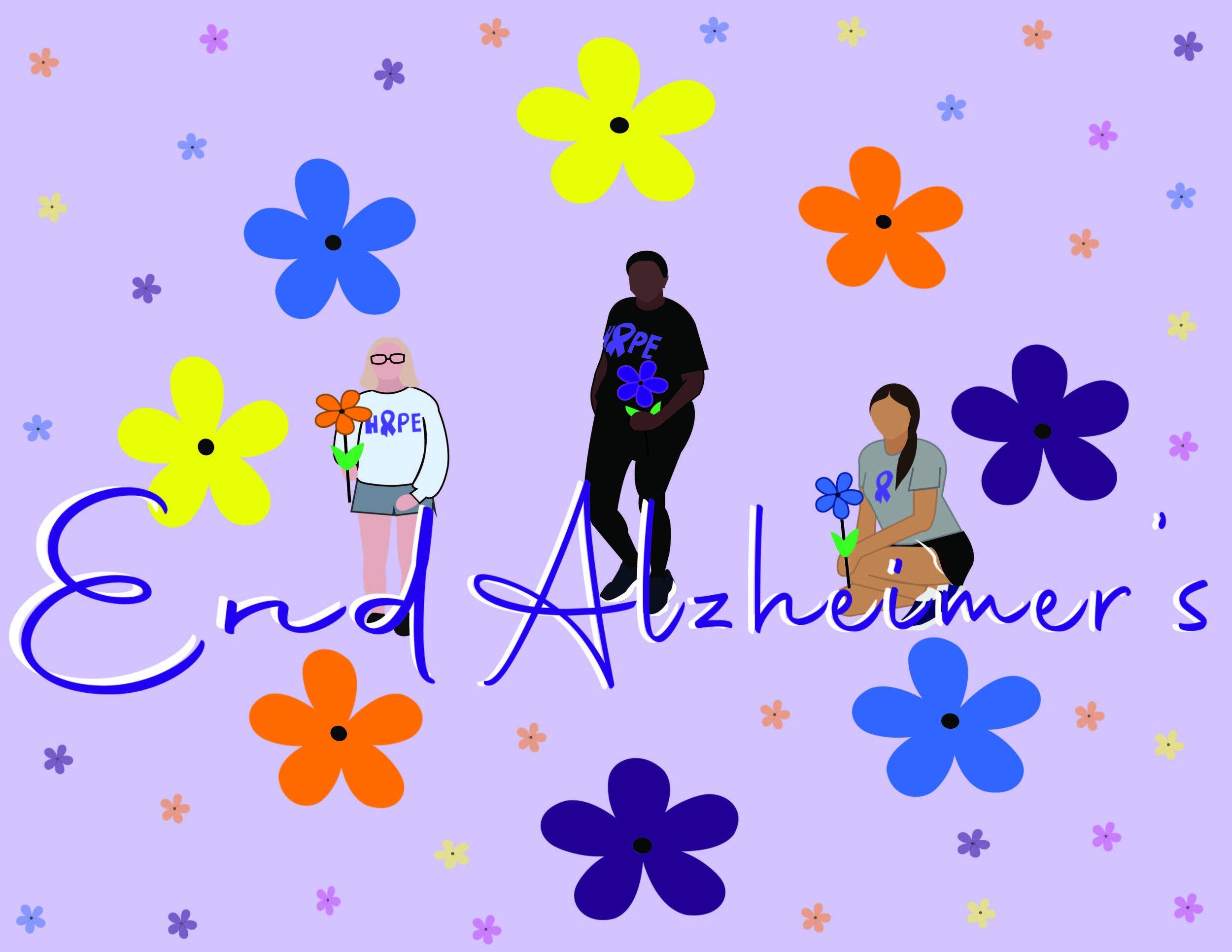Story by Maria Probert Hermosillo // she/her // @maria.probert
Graphic by Zorayda Sanchez // she/her
When my group and I arrived at the Q2 stadium to participate in the Walk to End Alzheimer’s event, we were approached by a friendly staff member who asked how we were connected to the cause. No one, including myself, was sure of how to answer. After some time, one of us honestly responded, “I don’t know what the group connection is.” This answer reflected my own blind attendance and overall detachment from the event.
I attended the walk primarily because it was promoted by The University of Texas at Austin’s Latin Economics and Business Association, otherwise known as LEBA. Of the 12 to 15 LEBA members who attended the event, at least three carried a purple flower pinwheel throughout the walk, meaning that they have lost someone to the disease. A yellow flower symbolizes that the carrier supports someone suffering from the disease, a blue flower symbolizes survivors and orange flowers signify supporters of the cause. I reluctantly held on to an orange flower throughout the walk.
This experience made me realize that, though Alzheimer’s is not uncommon, I was poorly educated on the subject and current research efforts.
There are at least 6 million people currently living with Alzheimer’s in the United States. Of those, about 400,000 live in Texas.
“A lot of people aren’t really aware that they are susceptible to Alzheimer’s because of genetic predisposition,” says Ana Pau Ponce, a current sophomore and LEBA member at UT. “I actually enjoyed participating because it’s a cause that I’m really close to.”
Unfortunately, about one in three seniors die from some sort of dementia or Alzheimer’s. Dementia is the general term for loss of memory and cognitive abilities, while Alzheimer’s is a disease that targets memory, thinking, and behavior. Alzheimer’s and dementia are never a part of the normal aging process. There are about 11 variations of dementia apart from Alzheimer’s, of which African American and Latinx persons are affected most often. Events like the Walk to End Alzheimer’s focus on collecting funds to support research for possible cures and the development of new treatments.
Support is vital for understanding the disease and helping those suffering from it. Alzheimer’s disease treatments are projected to cost about $1.1 trillion by 2050.
“Something that UT students can do to get involved is participating in events like this one, and donating to research,” says Ponce. “Overall, I would say participate in any events like the walk.”
Please visit the Walk to End Alzheimer’s and the Alzheimer’s Association websites to learn more about what you can do to help support the cause.











































